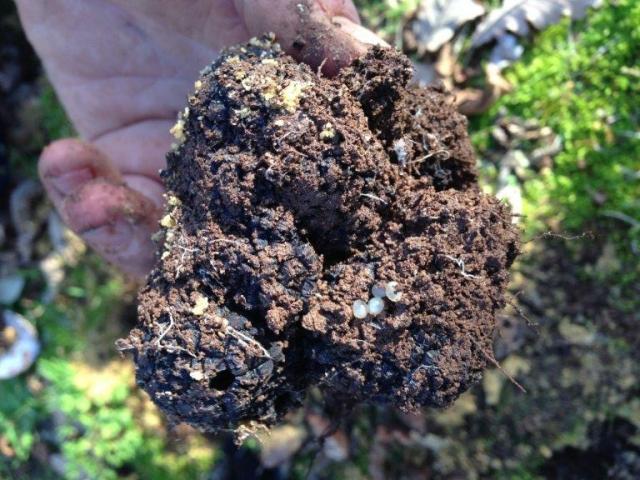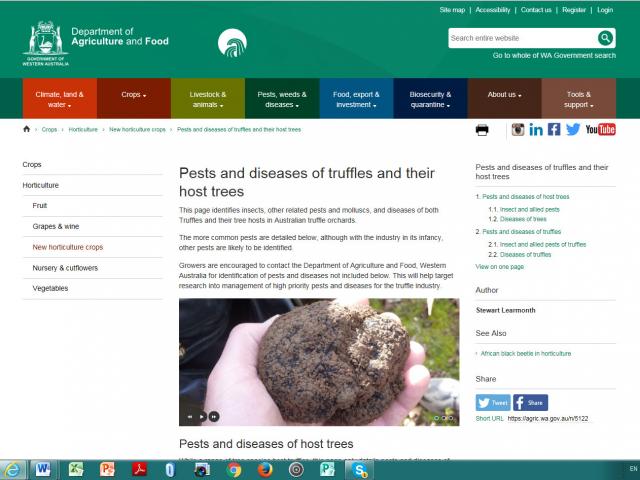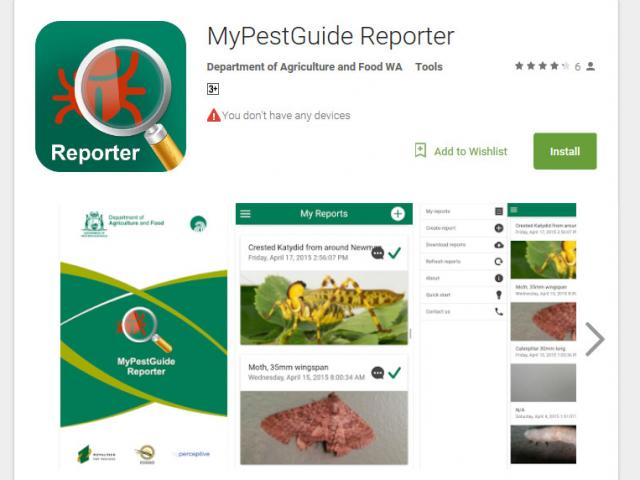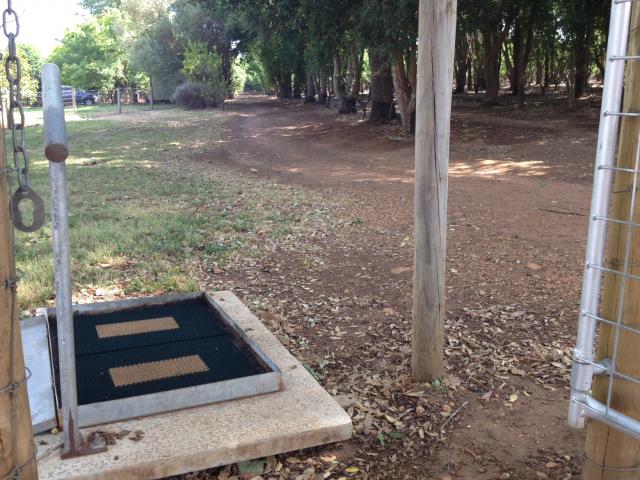Welcome to the project

Welcome to the first newsletter of the project Pests and diseases of truffles and their host trees in Australia, which is running from 29 May 2015 to 10 Jan 2019. This Newsletter is a biannual update of project activities and will be produced in December and June each year of the project.
The Department of Agriculture and Food, Western Australia is the lead agency in conducting this project and involves a team based in WA and eastern Australia.
This R&D project seeks to systematically identify and catalogue the range of pests and diseases observed in Australian truffle orchards and to develop an information package for growers on orchard best management practice. This will be achieved by collating data from grower surveys and intensive monitoring in some orchards. A conduit for all growers to have potential pests identified will be made available – for detail on this, see the article on the truffle pest enquiry line in this newsletter. Slugs, snails and collembolans have been recognised already as important pests to be investigated in detail.
Pest management in truffle orchards is relevant to both the establishment and ongoing maintenance of host trees. Also the yield and quality of the truffles are affected by invertebrate pests directly as well as indirectly through their contribution to truffle rot.
There has been little systematic observation and documentation of the pests and diseases of either the host trees or the truffles in Australia and consequently there is only limited information regarding management of the problems associated with pests. This project seeks to address this gap and provide truffle producers with a source of information on the identification of pests, their likely economic and/or environmental impact as well as information on their management.
The major components of the project are:
- Conduct a phone survey of truffle producers to assess the scope of pests and diseases and their management.
- Undertake regular monitoring at selected sites to document the occurrence, seasonality and impact of all pests for the life of the project.
- Answer enquiries from all producers to confirm the presence of known pests and diseases and to capture any unusual or new pest and disease issues and to provide a conduit for the identification and management options.
- Conduct a detailed study of the biology and management of slugs, snails and collembolans to clarify the species involved, their seasonality, damage caused and management options.
- Incorporate a review of best management practice for the major pests and diseases of truffles and their host trees in a management manual.
- Commence a mapping project to document location and other details of the Australian industry. This will be an ongoing exercise in the life of the project and beyond.
This project has now begun with the survey and orchard mapping underway in Western Australia, and mapping of truffle orchards in eastern Australia.
The project is financially supported by RIRDC, DAFWA, the Australian Truffle Growers Association, Truffle Producers of WA, The Australian National University, NSW DPI and Truffle and Wine Co. Manjimup.
The project team is made up of Stewart Learmonth, Helen Collie, Alan Jacob and Alison Mathews of the Department of Agriculture and Food WA, Alan Davey from Advyron RS Innovations, project officer from the Truffle and Wine Co. Manjimup WA, Celeste Linde of the ANU, Anne Mitchell of Manjimup Underground and Ainsley Seago from NSW DPI.
If you’re interested in other truffle information produced by the Department of Agriculture and Food, Western Australia they have web page on Cultivation of black truffles in Western Australia.
For any comments or questions in relation to the newsletter, please contact the project manager Stewart Learmonth: Ph (08) 9777 0167; stewart.learmonth@agric.wa.gov.au
Pest and diseases field guide and enquiry line

Pest and disease information is becoming more readily available to Australian truffle growers through the release of the first version of an information field guide and the launch of the national pest and disease enquiry line in the New Year.
The field guide can be used to assist truffle growers in identifying, monitoring and managing a range of pests and diseases and the note Pests and Diseases of Truffles and their Host Trees is now available as on the DAFWA website. This information has been collated from the experience of the project team and a review of information available from other sources in Australia and overseas. Edit - this note has now been superseeded by the Australia truffle orchards - integrated pest and disease management manual and Australia truffle orchards - pests and diseases field guide, both are available for download from the DPIRD website.
This field guide will be updated during the life of the project as new information comes to hand. Later updates will also include symptoms of nutrient stresses on trees which can sometimes be confused with pest infestation or disease infection, or make trees more prone to pests and diseases.
By early January 2016, truffle growers will also be assisted with pest and disease identification and can help build on the information in the guide by using the national truffle pest and disease enquiry line. Through the enquiry line we aim to assist growers one-on-one with identification of pests and diseases present in their orchards. The information gathered on the location and impact of different pests and diseases across the country through the enquiry line will add to our knowledge on truffle management, help direct the project focus and keep the field guide up to date.
The enquiry line can be accessed via the MyPestGuide Reporter which is available either as an app from Google Play and the App Store or online on the DAFWA website. The MyPestGuide Reporter was originally set-up as a biosecurity reporting service and has now been expanded to include a number of projects focussed on pests and diseases of agriculture, including this one.
The MyPestGuide Reporter allows you to send the project team photos and a description of any pest or disease in your truffle orchard. Later in this article is a step by step guide on how to use the app.
When we receive an enquiry we will aim to identify the problem and recommend management options. If more information is needed we may ask you to send in a sample to help with diagnosis.
After you have downloaded the MyPestGuide Reporter app to your device you are ready to make a report. Either choose ‘create report’ from the main menu or select the ‘+’ icon.
- The first step is to add photos of the agent/ insect, or symptoms of affected plant tissue from feeding or disease. Good quality photos help us to help you. Using a contrasting background to the subject can be helpful and, if possible, can be done by placing the subject i.e. leaf, insect on a plain piece of paper. Also, ensure photos are in focus, particularly important for close up macro shots. Some phones take very poor quality macro photos, in which case you may like to use a camera and load the photos via the DAFWA website.
- You can choose to turn the location on or off. Knowing your location can help us narrow down the problem and also identify if there are pest or disease trends in your area. If you turn off the GPS locator we cannot determine the location of the pest/disease.
- Next to ‘Send report’ there is a drop down menu. It is very important that you select ‘truffle survey’ from the drop down menu. This will ensure that your enquiry gets sent to the truffle project team.
- In the ‘Where’ and ‘I found’ description boxes provide details on what you might think may be relevant to the identification of the pest. Some of the information you may provide includes:
- Whether it was a tree pest or a truffle pest and if a tree pest, where it was located, e.g. canopy, new growth, ground; if this is not clear from the photos.
- Extent of the spread throughout the orchard and if it is more concentrated in or localised to a particular area.
- Timeframe - how long has it been there.
- Timing – does it occur seasonally, in conjunction with certain management practices or weather conditions?
- ‘Is it urgent?’ option – All enquiries will be responded to. As mentioned previously this app is used by a number of projects and this function is designed for situations in which the crop is under imminent threat of failure from the pest or disease. If you believe that is true for your enquiry then tick the box. Even if you don’t tick the urgent box your enquiry will be responded to within a timely manner.
- By agreeing to share your reports they will be available on the MyPestGuide website map. After being checked by someone from the project team each shared report is marked on the map along with the photo and description provided and the response from the project team. Sharing reports allows others in the industry to learn about pests and diseases in their area. If you choose not to share your report the project team is still able to access all of the information you provide and you can still view your own reports on MyPestGuide website map when you loginto the webpage.
- If you are out of range when making a report it will not be sent. When you are back in range select ‘refresh reports’ from the main menu to send the report.
Once you have created a report it will be listed in your app home page so you can easily scroll through and look at past reports. You will receive an email prompt with each response from the project team. To view the responses in the app you must select ‘refresh reports’ from the main menu, this does not happen automatically. If you have further questions after we’ve responded you can get back to us via email, or respond through the app.
As mentioned earlier there is a map on the MyPestGuide webpage on which you can view the location of your reports alongside shared community reports. At this stage the map shows all shared reports from all projects using the MyPestGuide Reporter app. In the future a filter option will be set up so that you can choose to only view reports from projects of interest to you i.e. truffles.
Filing a report via the website follows much the same process but you are required to manually enter your email, phone number and gps location or mark location on the map.
Please note there are two other MyPestGuide apps available, the MyPestGuide Crops and the MyPestGuide Grapes. These apps include pest field guides for the broadacre cropping and wine grape industries. To make a report to the truffle project you need the MyPestGuide Reporter.
National grower survey
One of the first activities of this new project is a survey of truffle growers. The survey will gather information on pests and diseases as well as different aspects of truffle orchard management and attributes of the orchard. This survey is a critical first step for the project as it will give a fuller picture of the pest and disease incidences and trends in production zones across the country and any management issues being faced by producers. The information gathered will help us target project resources for maximum efficiency.
To ensure this project provides the most benefit to industry we need your help to gather all relevant information on pest and disease issues. The better the information we have the more relevant work will be to you and your industry. Please note all information will be treated confidentially and reported in aggregate only. Results will be communicated by the project team via the DAFWA website, this newsletter and at grower meetings.
The survey will also help facilitate the selection of field sites for monitoring and research. Field activities on truffle pests and diseases will commence early in the New Year.
The survey has already commenced in Western Australia, with over 30% of known truffle growers surveyed so far. We will continue surveying in WA through December and will commence in other states in January.
If you haven’t already, you will be contacted by a project team member over the coming weeks –Alan Davey (Advyron RS Innovations, ACT), Ainsley Seago (New South Wales Department of Primary Industries), project officer (Truffle & Wine Co. WA), Anne Mitchell (consultant, WA) or from DAFWA - Helen Collie, Alan Jacob or Stewart Learmonth.
Prior to the survey, we request growers familiarise themselves with some of the pests and diseases we will be asking about by reading Pests and diseases of truffles and their host trees on the DAFWA website.
We have contact details for many truffle growers, but if you have not received a call from a member of the truffle project team by the end of January 2016 and would like to take part in the survey, or know of other growers who may have been missed, please get in touch with project manager Stewart Learmonth - Ph (08) 9777 0167; stewart.learmonth@agric.wa.gov.au
From the surveys conducted so far the main “pests” of trees have been a suspected bacterial disease of hazelnuts and a borer that attacks hazelnuts, as well as establishment pests such as African black beetle. To date oak trees appear to be relatively free of pests or diseases. As far as truffles are concerned, slugs have been the major pest.
As well as being able to prioritise the research program for this project, information gathered during the survey will assist in industry biosecurity planning and management. RIRDC is involved with the project by Plant Health Australia in developing an Australian Industry Biosecurity Plan to assist the industry in being prepared should exotic agents not yet known to occur in Australia arrive. Early detection of such agents is critical in the success of eradication. Knowing the location of truffle orchards and being able to contact growers is critical in this quest.
ATGA Conference and AGM – Pest and disease project presentation and field activity
Members of the truffle pest and disease project Alan Davey, Celeste Linde, Stewart Learmonth and Anne Mitchell attended the Australian Truffle Growers Association 2015 Conference and AGM at Queanbeyan NSW.
Anne and Stewart delivered a joint PowerPoint presentation describing the background to the project and an update on progress in some of the initial activities. Any grower who wishes to view the presentation can request a PDF version by contacting Stewart Learmonth via email at stewart.learmonth@agric.wa.gov.au.
As well as the presentation, members of the project team who attended the conference participated in a field activity at the truffle orchard managed by Wayne Haslem. The field activity was introduced by Alan Davey who also included a brief description of the project and the principles involved with Integrated Pest Management, which will be followed as the pest and diseases project rolls out and also demonstrated a microscope attachment that plugs into the USB port of a computer. In this regard, Anne mentioned the availability of an accessory for i-Phones that allowed close-up photographs of pests. Detailed description of pests and diseases identified in some of the oak and hazelnut trees and some options for their management were described and discussed by Celeste, Anne and Stewart in collaboration with growers present.
Basics of on-farm hygiene
Good on-farm hygiene, or farm biosecurity as it is also known, is important for any agricultural venture. By being aware and following some key steps you can reduce the risk of unwanted insect, plant, animal and microbiological organisms entering your property and possibly causing problems. Poor on-farm hygiene can lead to:
- reduction of product quality
- reduction of yield
- contamination of product with inferior products
It is impractical to stop all pest and disease movement onto your property but you can minimise the risk.
Foreign pests, diseases or contaminant fungi are most often brought into orchards in soil and plant material either intentionally introduced or by ‘hitching a ride’ on people, machinery and equipment and/or animals.
You can limit the people who enter the production area on your property to only those that need to enter. When they do enter it is particularly important that they have clean, dirt free, footwear. Having footbaths for cleaning and sanitising footwear at the entrance to the orchard is a good idea.
Likewise, all non-essential vehicles, machinery and equipment should be excluded from the orchard; and should be clean and free of dirt when it does enter. Having a wash down bay makes it easy for vehicles and machinery to be cleaned before entering the orchard, this is particularly important for vehicles that visit other properties such as contractors. Designated roadways can also reduce the amount of traffic into production areas.
Regular crop surveillance is always a good idea. It helps you pick up new pest and disease problems early, keep on top of any ongoing pest and disease issues as well as track general tree health and management practices.
More detailed information on truffle orchard on-farm hygiene is available on the DAFWA website.


